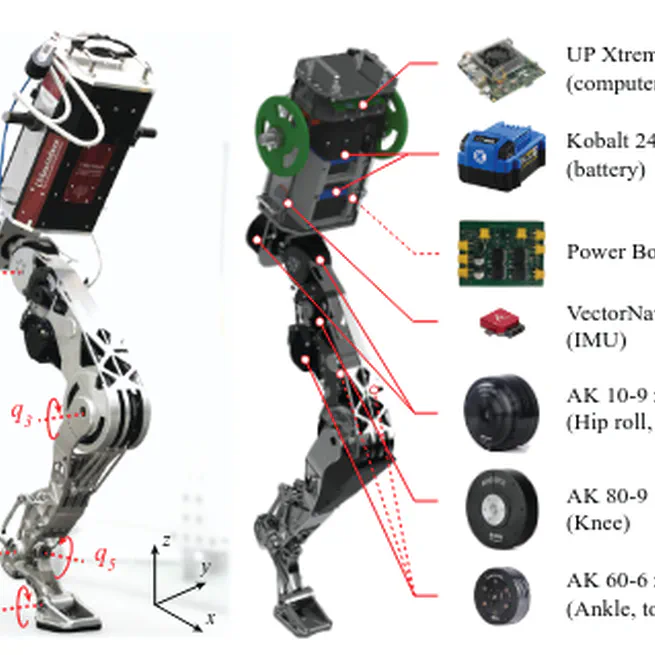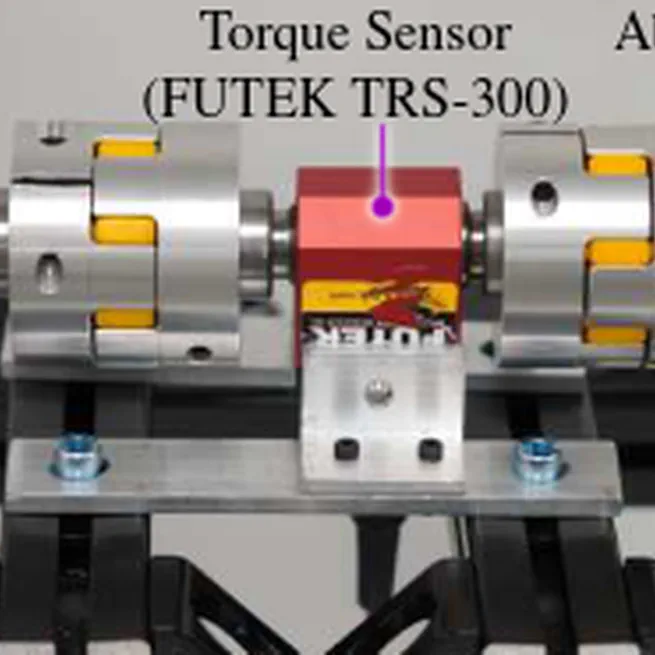
Project Contributions Leg design optimization for stair climbing CAD modeling of entire robot Electrical subsystem design, spanning power electronics and motor control Coordination of international contract manufacturing Generation of engineering drawings Skills Used Mechanical Design: CAD, topology optimization OnShape, Ansys Workbench Mechatronics: Circuit design, soldering Robotics Analysis: Workspace analysis, dynamics modeling Python, MATLAB, URDF generation Co-Authored Publications Hwang, H., Suzuki, K., Giudice, N. A., Biswas, J., Lee, S. I., & Kim, D. (2024). Lessons Learned from Developing a Human-Centered Guide Dog Robot for Mobility Assistance. arXiv preprint arXiv:2409.19778. Link to paper Hwang, H., Xia, T., Keita, I., Suzuki, K., Biswas, J., Lee, S. I., & Kim, D. (2023, May). System Configuration and Navigation of a Guide Dog Robot: Toward Animal Guide Dog-Level Guiding Work. In 2023 IEEE International Conference on Robotics and Automation (ICRA) (pp. 9778-9784). IEEE. Link to paper Project Description As the team lead of my senior design project at UMass Amherst, I led the development of a quadruped guide dog robot specialized for guiding blind and low-vision individuals in urban environments. The development of this robot was a continuation of our previous work on guide dog robots published in ICRA 2023. We identified various gaps in the current quadruped robot market that motivated us to design this specialized robot, namely: There is no quadruped robot on the market that can both climb standard-sized stairs and fit within the carry-on dimensions for air travel. Existing quadruped platforms lack vision systems equipped with the field of view required for a guide dog robot. Constructing our own guide dog robot platform gives us the flexibility to implement our own custom hardware, which is highly beneficial from a user-centered design perspective, allowing us to experiment with various sensors, methods of user interaction, and so on.
May 30, 2025

Project Contributions Dynamic modeling of BLDC motors through empirical tests for improved simulation accuracy Mechanical design of robot components (linkages, wire harnesses, body) Fabrication of robot body Generation of engineering drawings Skills Used Mechanical Design: CAD, topology optimization OnShape, Ansys Workbench Numerical Analysis Python (Numpy) Manufacturing CNC milling (Tormach) Co-Authored Publications Perera, N., Yu, S., Marew, D., Tang, M., Suzuki, K., McCormack, A., … & Kim, D. (2024, October). Staccatoe: A single-leg robot that mimics the human leg and toe. In 2024 IEEE/RSJ International Conference on Intelligent Robots and Systems (IROS) (pp. 9058-9065). IEEE. Link to paper Project Description We introduce StaccaToe, a human-scale, electric motor-powered single-leg robot designed to rival the agility of human locomotion through two distinctive attributes: an actuated toe and a co-actuation configuration inspired by the human leg. Leveraging the foundational design of HyperLeg’s lower leg mechanism, we develop a stand-alone robot by incorporating new link designs, custom-designed power electronics, and a refined control system. Unlike previous jumping robots that rely on either special mechanisms (e.g., springs and clutches) or hydraulic/pneumatic actuators, StaccaToe employs electric motors without energy storage mechanisms. This choice underscores our ultimate goal of developing a practical, high-performance humanoid robot capable of human-like, stable walking as well as explosive dynamic movements. In this paper, we aim to empirically evaluate the balance capability and the exertion of explosive ground reaction forces of our toe and co-actuation mechanisms. Throughout extensive hardware and controller development, StaccaToe showcases its control fidelity by demonstrating a balanced tip-toe stance and dynamic jump. This study is significant for three key reasons: 1) StaccaToe represents the first human-scale, electric motor-driven single-leg robot to execute dynamic maneuvers without relying on specialized mechanisms; 2) our research provides empirical evidence of the benefits of replicating critical human leg attributes in robotic design; and 3) we explain the design process for creating agile legged robots, the details that have been scantily covered in academic literature.
Oct 14, 2024

Project Contributions Design and fabrication of a dynamometer Torque sensor integration with MATLAB Dynamic modeling of BLDC motors through empirical tests for improved simulation accuracy Coordination of contract manufacturing Generation of engineering drawings Skills Used Mechanical Design: CAD, By-hand mechanics of materials analysis OnShape Sensor Integration MATLAB Manufacturing CNC milling Project Description In this project, I designed and assembled a custom dynamometer to empirically obtain the motor torque constants of the BLDC motors used in the StaccaToe robot. I fabricated custom motor mounting plates using the Tormach PCNC1100 CNC mill and assisted in setting up the FUTEK TRS-300 torque sensor in MATLAB for obtaining torque data. The input current to the BLDC motor is measured using the motor’s onboard drivers. The design of the shaft couplings were optimized using a by-hand torsion calculation with a safety factor of 1.2, and were manufactured through MISUMI’s contract manufacturing service. The shaft couplings are connected via two oldham couplings.
Oct 14, 2024
Project Contributions Skills Used Mechanical Design: CAD, GD&T SolidWorks Sensor Integration Arduino, Python Rapid Prototyping 3D printing Project Description In this project, I designed and assembled a custom dynamometer to empirically obtain the motor torque constants of the BLDC motors used in the StaccaToe robot. I fabricated custom motor mounting plates using the Tormach PCNC1100 CNC mill and assisted in setting up the FUTEK TRS-300 torque sensor in MATLAB for obtaining torque data. The input current to the BLDC motor is measured using the motor’s onboard drivers. The design of the shaft couplings were optimized using a by-hand torsion calculation with a safety factor of 1.2, and were manufactured through MISUMI’s contract manufacturing service. The shaft couplings are connected via two oldham couplings.
Oct 24, 2023